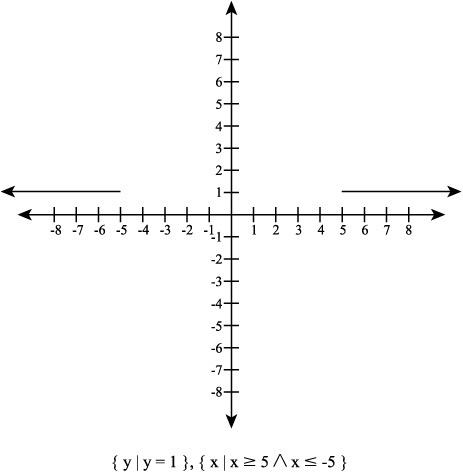Non-Functional Relationship
Not every pair of sets designating a domain and a range represent a functional relationship. One test you can use to determine whether the graphical depiction of a set of coordinates represents a function involves using a vertical line. Accordingly, if you apply the vertical line test to a graph, the graph cannot pass over the line more than once.
Figure 4.11 illustrates, once again, the path of a fly. The fly’s path does not constitute a function. In quadrants II and IV, you see that two of the pairs feature 5 as the domain (x) value. In quadrants II and III, you see that again, the domain value repeats itself, this time as –5. Given these redundancies, while it is clear that relations exist between the values of the domain and the range, the mapping of the domain to the range does not represent a function.
Figure 4.11. The path of a fly does not unfold as a function.

Figure 4.12 illustrates three instances in which the vertical line test reveals that the graphs of lines do not represent functions. Graph A fails the test because any pair you identify above the x axis has a corresponding pair below the x axis. Graph B fails in the same way. For Graph C, the situation is a bit more complex, but the problem remains the same. Consider, for example, that the line crosses the y axis four times.
Figure 4.12. The vertical line test reveals that the graphical representations of different sets of coordinates do not represent functions.

Discontinuous Lines
Graphs that represent functions do not have to be continuous. Figure 4.13 illustrates a graph of a discontinuous line. The graph passes the vertical line test because all domain values generate unique range values. The fact that no values can be found along the x axis that are less than 5 and greater than –5 does not change things. The y, or range values, are all the same for the ordered pairs you might name for the function. You can formally represent the function in this way:
Figure 4.13. Lines can be discontinuous, but the outcome corresponds to a function.

y = 1, where {x ≤ –5 ∪ x ≥5}
In this expression, you define the values of x as a union of all the values greater than or equal to 5 and less than or equal to –5.
